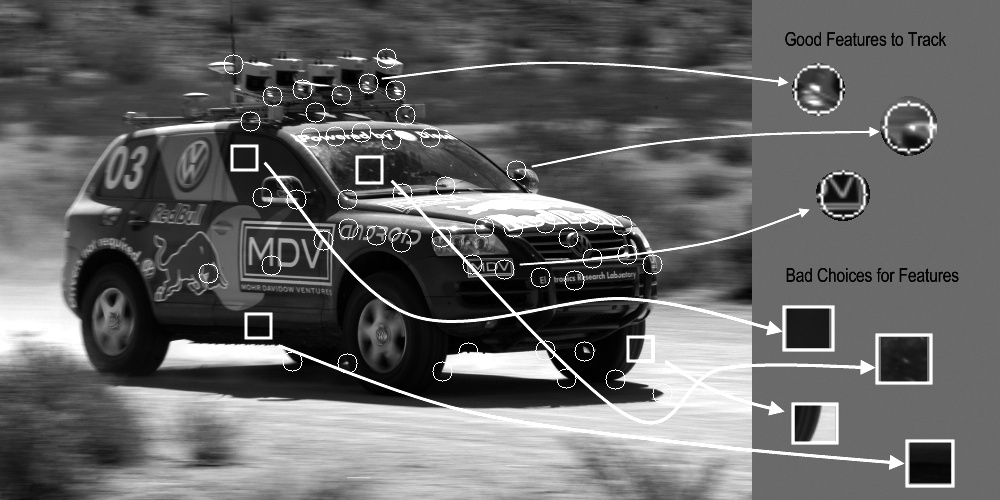Corner Finding
There are many kinds of local features that one can track. It is worth taking a moment to consider what exactly constitutes such a feature. Obviously, if we pick a point on a large blank wall then it won't be easy to find that same point in the next frame of a video.
If all points on the wall are identical or even very similar, then we won't have much luck tracking that point in subsequent frames. On the other hand, if we choose a point that is unique then we have a pretty good chance of finding that point again. In practice, the point or feature we select should be unique, or nearly unique, and should be parameterizable in such a way that it can be compared to other points in another image. See Figure 10-1.

Figure 10-1. The points in circles are good points to track, whereas those in boxesâeven sharply defined edgesâare poor choices
Returning to our intuition from the large blank wall, we might be tempted to look for points that have some significant change in themâfor example, a strong derivative. It turns out that this is not enough, but it's a start. A point to which a strong derivative is associated may be on an edge of some kind, but it could look like all of the other points along the same edge (see the aperture problem diagrammed in Figure 10-8 and discussed in the section titled "Lucas-Kanade Technique").
However, if strong derivatives are observed in ...
Get Learning OpenCV now with the O’Reilly learning platform.
O’Reilly members experience books, live events, courses curated by job role, and more from O’Reilly and nearly 200 top publishers.

